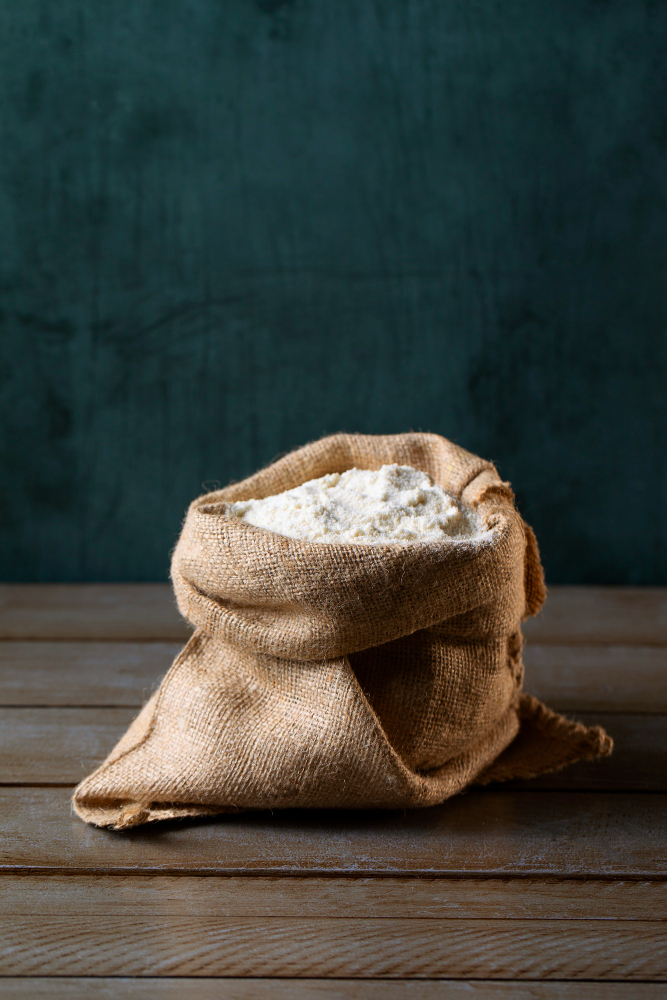Tips to Know the Quality of Flour
Flour is a staple ingredient in countless recipes, from bread and pastries to sauces and gravies. The quality of flour can significantly affect the taste, texture, and success of your culinary creations. Knowing how to assess flour quality is essential for any home cook or professional baker. Here are some key tips to help you determine the quality of flour.
1. Check the Protein Content
One of the most critical factors in determining flour quality is its protein content. Protein levels vary between different types of flour, such as all-purpose, bread, or cake flour. High-protein flour, often labeled as bread flour, is ideal for baking bread because it creates a stronger gluten network, resulting in a chewy, well-risen loaf. Lower-protein flour, like cake flour, produces a tender, crumbly texture suitable for cakes and pastries. Always check the label for protein content, which is typically expressed as a percentage. For example, bread flour usually has a protein content of 12-14%, while cake flour is around 7-9%.
2. Examine the Flour’s Color
The color of flour can also be an indicator of its quality. High-quality flour should have a consistent, even color that is appropriate for its type. For example, white flour should be pale or creamy white, while whole wheat flour will have a darker, brownish hue due to the presence of bran and germ. Flour that appears grayish or discolored may be old or improperly stored, which can negatively impact the flavor and performance of your baked goods.
3. Feel the Texture
The texture of flour is another important quality indicator. High-quality flour should feel soft and fine, with a smooth, powdery consistency. If the flour feels gritty or coarse, it may not have been milled properly, which can lead to uneven results in baking. Additionally, if the flour feels damp or clumpy, it may have absorbed moisture, which can cause it to spoil more quickly and affect the final product’s texture.
4. Smell the Flour
Flour should have a neutral or slightly nutty aroma. A strong or unpleasant odor, such as a sour or musty smell, can indicate that the flour has gone rancid or been contaminated. This is especially important for whole grain flours, which contain natural oils that can become rancid if the flour is not stored properly. Always give your flour a quick sniff before using it, and discard any that smells off.
5. Check the Expiration Date
Flour, like all food products, has a shelf life. While flour can last several months if stored correctly, it will eventually degrade in quality. Always check the expiration date on the package before purchasing or using flour. Even if the flour looks and smells fine, it’s best to use it before the expiration date to ensure optimal quality. Storing flour in an airtight container in a cool, dry place can help extend its shelf life.
6. Look for Any Signs of Pests
Flour can be prone to infestation by pests, such as weevils or flour beetles. Before using flour, it’s important to inspect it for any signs of pests, such as small dark specks or tiny insects. Contaminated flour should be discarded immediately, as it can ruin your recipes and pose health risks.
7. Consider the Brand and Source
Finally, the brand and source of your flour can be a good indicator of its quality. Reputable brands that are known for their high standards often produce consistently good flour. Additionally, some bakers prefer to buy flour from local mills or organic sources, believing that these flours offer better quality and flavor. Experimenting with different brands and sources can help you find the flour that works best for your specific needs.
Conclusion
Knowing how to assess the quality of flour is a valuable skill for anyone who enjoys baking or cooking. By paying attention to factors like protein content, color, texture, smell, expiration date, and potential pests, you can ensure that you are using the best flour for your recipes. Additionally, considering the brand and source can further guide your selection process. High-quality flour can make a significant difference in the success of your culinary endeavors, leading to better-tasting and more satisfying results.

